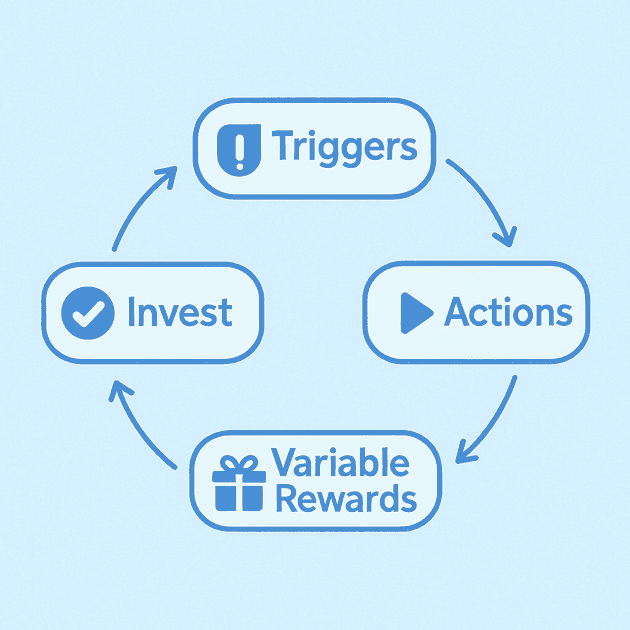User habits develop when products consistently guide users through triggers, actions, variable rewards, and investments. This four-step hook model shapes user habits by linking automatic behaviors to internal emotions.
In Nir Eyal's influential book Hooked, he explains how companies create products that help users effortlessly develop habits, such as opening an app without thinking or checking notifications out of boredom.
He introduces a four-step framework to analyze precisely how products subtly transform occasional usage into automatic habits.
The first step is Trigger. Triggers can be external, such as a phone notification directing you to an app, or internal, like feelings of loneliness or boredom prompting the same behavior without any external cues. The product designer aims to quickly transition users from relying on external triggers (alerts) to internal triggers (emotional states) to make the product usage instinctive.
The second step is Action, the simplest behavior a user can perform to continue forward. For example, tapping to refresh, swiping to match, or scrolling for more content. The designer's objective is to either increase motivation or reduce effort so that the action feels effortless. This is closely related to the Fogg behavior model we learned before.
The third step is Variable Reward. Meaningful unpredictability keeps the brain engaged, and variable rewards continuously activate the dopamine system because users never know exactly what they'll receive. Eyal categorizes these rewards into three archetypes:
- Rewards of the Tribe (social validation and belonging, such as likes or comments)
- Rewards of the Hunt (searching for resources or information, like endless feeds or pull-to-refresh)
- Rewards of the Self (personal mastery and achievement, such as leveling up or maintaining streaks)
This is also highly related to the Random Intermittent Reward we learned before.
The final step is Investment. The product prompts users to make small contributions, such as adding a friend or saving a song. Each of these investments stores personal value within the product, serving four key purposes:
- Enhances product usefulness: Giving a thumbs-up on Netflix refines its algorithm, ensuring you receive better recommendations next time.
- Raises switching costs: Adding new notes to Notion makes switching to another note-taking app increasingly inconvenient.
- Creates future triggers: Gaining a new follower on Instagram generates additional notifications in the future.
- Signals progress: Duolingo's streak counter capitalizes on users' commitment to maintaining their progress.
When repeated often enough, this loop converts external prompts into internal impulses. Users begin opening apps automatically because their emotions now directly trigger the behavior. Products that effectively master these four steps build habits that become difficult to break.
